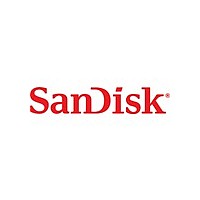SDMJ-128 SanDisk, SDMJ-128 Datasheet - Page 43

SDMJ-128
Manufacturer Part Number
SDMJ-128
Description
Manufacturer
SanDisk
Type
MultiMedia Cardr
Datasheet
1.SDMJ-128.pdf
(91 pages)
Specifications of SDMJ-128
Density
128MByte
Operating Supply Voltage (typ)
3.3V
Operating Temperature (min)
-25C
Operating Temperature (max)
85C
Package Type
MMC
Mounting
Socket
Pin Count
7
Operating Temperature Classification
Commercial
Operating Supply Voltage (min)
2.7V
Operating Supply Voltage (max)
3.6V
Programmable
Yes
Lead Free Status / Rohs Status
Compliant
Revision 1.3
© 2005 SanDisk Corporation
All data communication in the Data Transfer Mode is point-to point between the host and
the selected MultiMediaCard (using addressed commands). All addressed commands are
acknowledged with a response on the CMD line.
The relationship between the various data transfer modes is summarized in the card state
diagram, Figure 4-2, and in the following paragraphs:
• The stop command (CMD12) can abort all data read commands at any given time. The
• The stop command (CMD12) can abort all data write commands at any given time. The
• When the data transfer is complete, the MultiMediaCard/RS-MultiMediaCard exits the
• If a block write operation is stopped and the block length and CRC of the last block are
• The card may provide buffering for block write: the next block can be sent to the card
• No buffering option is available for write CSD, write CID, write protection, or erase:
• Parameter-set commands are not allowed when the card is programming. Parameter-set
• Read commands are not allowed while the card is programming.
• Moving another MultiMediaC/RS-MultiMediaCard from Stand-by to Transfer State
• A card can be reselected while in the Disconnect State, using CMD7. In this case the
• Resetting the card (using CMD0 or CMD15) will terminate any pending or active
data transfer will terminate and the card will return to the Transfer State. The read
commands are block read (CMD17), multiple block read (CMD18), and send write
protect (CMD30).
write commands must be stopped prior to deselecting the card with CMD7. The write
commands are block write (CMD24 and CMD25), write CID (CMD26), and write
CSD (CMD27).
data write state and moves to either the Programming State (successful transfer) or
Transfer State (failed transfer).
valid, the data will be programmed
while the previous is being programmed. If all write buffers are full, and the MMC/RS-
MMC is in Programming State (see MultiMediaCard state diagram Figure 4-2), the
DAT line will be kept low.
no other data transfer commands will be accepted when the MMC/RS-MMC is busy
servicing any one of the aforementioned commands. The DAT line will be kept low
throughout the period when the card is busy and in Programming State.
commands are set block length (CMD16), and erase tagging/untagging (CMD32-37).
(using CMD7) will not terminate a programming operation. The card will switch to the
Disconnect State and release the DAT line.
card will move to the Programming State and reactivate the busy indication.
programming operation, which may destroy the data contents on the card. It is the
host’s responsibility to prevent the potential destruction of data.
4-5
MultiMediaCard/RS-MultiMediaCard Product Manual
Chapter 4 – MultiMediaCard Protocol Description
04/22/05











